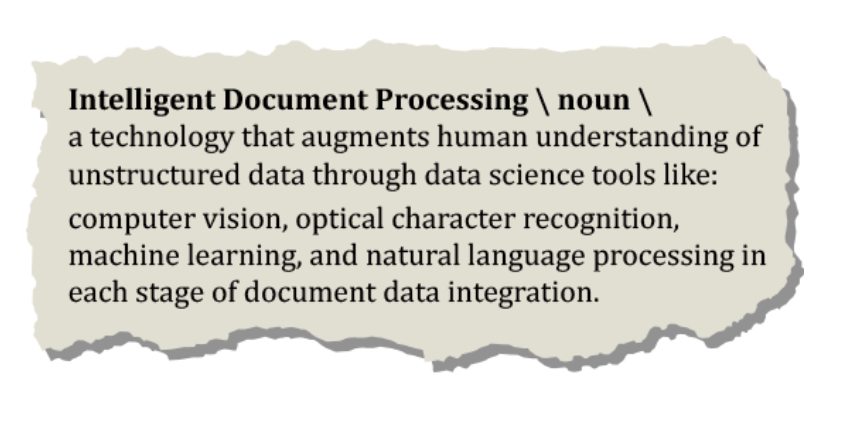Business Intelligence is just about numbers, isn’t it?
The promise of BI software and services is to cross various data sources to provide multi-dimensional intelligence about the comprehensive state of your business. It allows you to receive support for fact-based decision making, gain and maintain competitive advantage, measure, and track performance, make data and reporting accessible to everyone, and increase revenue and profitability. And the promise of BI software has largely been realized, but something is missing, something is not quite right, and it’s staring us in the face.
What if your comprehensive data coverage isn’t comprehensive? What if you’re managing your business with only a partial view of the critical data you need to make decisions or understand risks and opportunities?
Unfortunately, that expensive, ‘comprehensive’ BI software sitting in your IT stack has a massive blind spot. And one that could cost you not only millions of dollars but actual harm in reputational damage, talent retention and compliance infringement.

The critical dimension you are missing is TEXT

Are your documents compliant with SFDR, Taxonomy, GAAP, and Anti-bribery legislation? What about your third party documents ? What about investor communication documents or websites are telling ? Any inconsistency ?
The fact is you don’t know, so when you see numbers without the conditions attached to them, you aren’t even able to make an educated guess. It’s as if you could only see the profit numbers in your P&L, and the rest of the cost information is hidden.
The black swan events of Lehman Brothers, JP Morgan, and Covid-19 have shown us that the old strategies no longer work, and the cost of not knowing is growing exponentially.
How did things get this way?

It’s true companies like yours gained unmatched benefits when BI emerged as a system of sharing information across organizations. BI allowed better decision-making, turning data into insights, for employees the flexibility of self-service analysis, governed data on trusted platforms, and empowered business users.
BUT all BI systems focused on the quantitative data and avoided the other side of the coin, qualitative data. Why? That’s simple. It was too hard for BI firms to access qualitative data. Trustworthy qualitative information is only useful if it’s accurate and relies on precise wording in business documents. And business documents, by their very nature, are heterogeneous, where the devil is in the details. So BI firms ignored the problem and focused on quantitative data, leaving qualitative information in the dark ages and accessible only by the most laborious approach – manual audits.
Text Analytics & Document Intelligence is the last frontier for Business Intelligence

Today, however, ignoring this gap in your BI landscape is no longer sustainable. Macro trends in regulations, economies and technologies demand higher visibility, agility, and innovation, driving an increasingly critical and frequent need to access qualitative data from words in documents. You will expect to have the same view and insights of your qualitative data in your BI system as you do of your quantitative data. This is the last frontier for BI.
Not knowing has a cost, and it’s growing. And new digitally-savvy companies will disrupt and compete with more knowledge than you.
Until now, BI users are primarily in sales, marketing, and finance functions because they can cross-reference data. With BI for text, you will be able to expand the scope of BI Analytics to new roles and departments, particularly support functions – Finance, Audit, Compliance, Risk, HR, & M & M&A – that have been left behind in the digital transformation journey and currently perform investigations manually. BI for text will allow companies to make fundamental changes and transform their business operations to be the intelligence engine of the organization – a new Intelligent Operations at the heart of the enterprise. A new paradigm that also resolves the paradox of needing faster innovation and agility to compete, with the demands of more control and regulation.
A New Generation of Document Intelligence Solutions has arrived

Some forward-thinking firms have identified the challenges we’ve seen above. And some have tried to tackle the qualitative data challenge, but few have succeeded as the manual way is still the primary way. Some companies have been attempting to take an ‘Outside-In’ approach by applying a hypothesis to a mass of documents (e.g. Pandemic clause) which would work perfectly if all documents were typical, had standard wording and practices. But in the real world, this doesn’t exist. Wording is different in different places, and most documents are unique in their make-up or ‘genome’. When documents are genuinely unique (which is the case with business documents in large groups), this approach cannot deliver on the accuracy and reliability you need and requires extensive training not fit for fast decisions and actions. It fails specifically and spectacularly as you can be precisely wrong in a very specific decision you might need to make. A generalization could hide that very specific costly insight you need.
A few bold companies, including Document Genome, have taken a different route – an ‘Inside-out’ approach – where we don’t start with any assumptions on the make-up of the documents, but literally ‘sequence the genome’ of the documents being analyzed and derive patterns from the actual data. By design, this is faster, more accurate, more exhaustive and in the end, totally traceable. And what’s more, this can work for any document type, on any use case, in most languages and without machine training.
And this new generation of solutions embraces the best of the latest infrastructure technologies with SaaS cloud computing services and Kubernetes for deployment in a private cloud, for example. These future-proof solutions ensure they can scale while also addressing high demands on data privacy, security, ease of maintenance and micro-services.
Document Genome is born

Document Genome was founded in 2016 on the unique insight that documents consist of both words and numbers and that only numbers were being used in BI systems everywhere. Text remains in documents as text, and the qualitative knowledge it contains is trapped and unusable at scale. It became our mission to free this qualitative knowledge for businesses everywhere, delivering answers securely, at scale, with full traceability and at lower costs than today’s manual methods.
To do that, we had to achieve the unthinkable. Crack the Document Genome, which we achieved in 2019. Since then, we’ve been working on bringing our technology to market and ensuring it’ll deliver on the promise to users and analysts in companies so they can focus on high-value tasks and not low-value manual audits with all the risk that human errors will occur.
